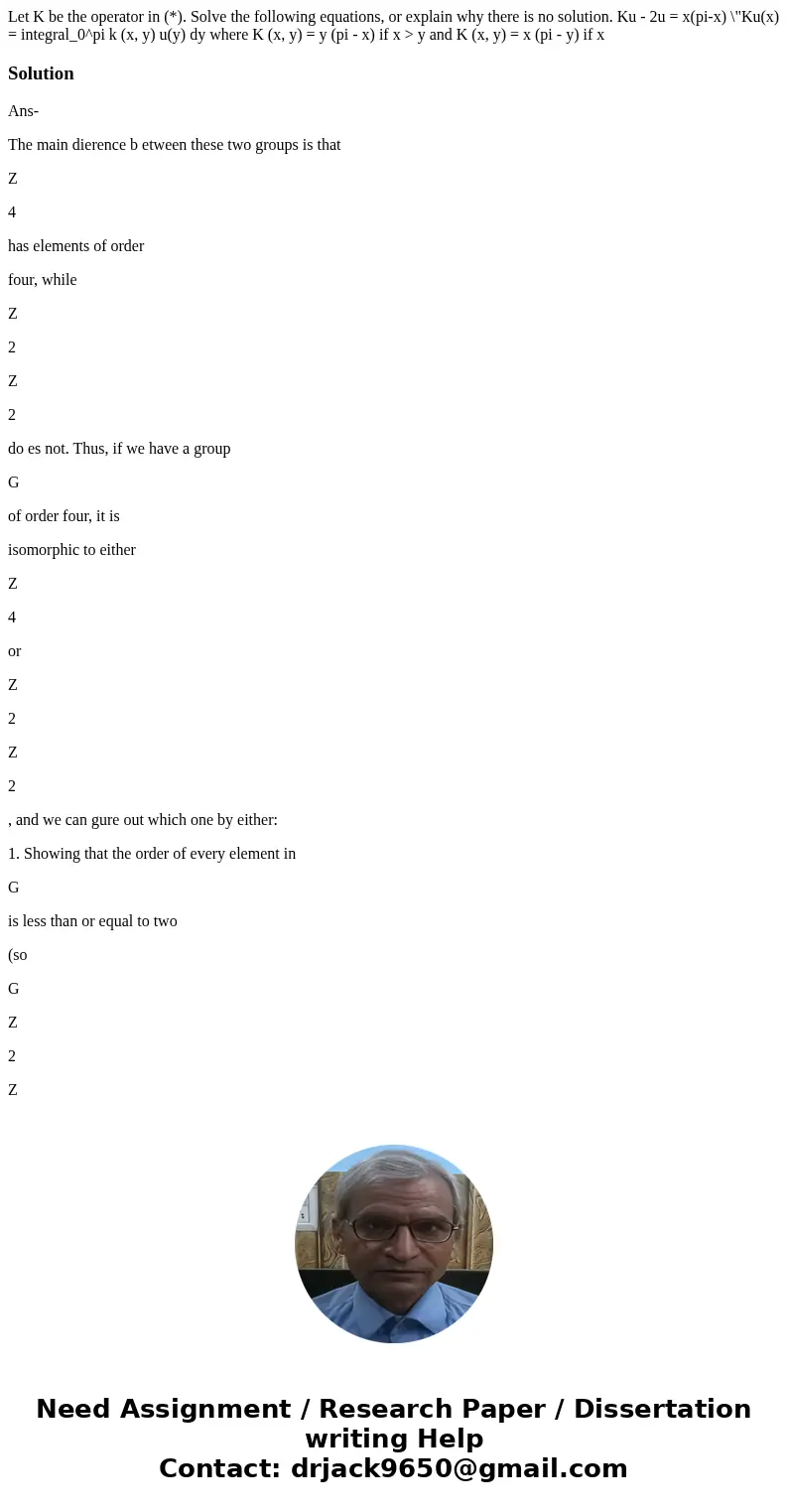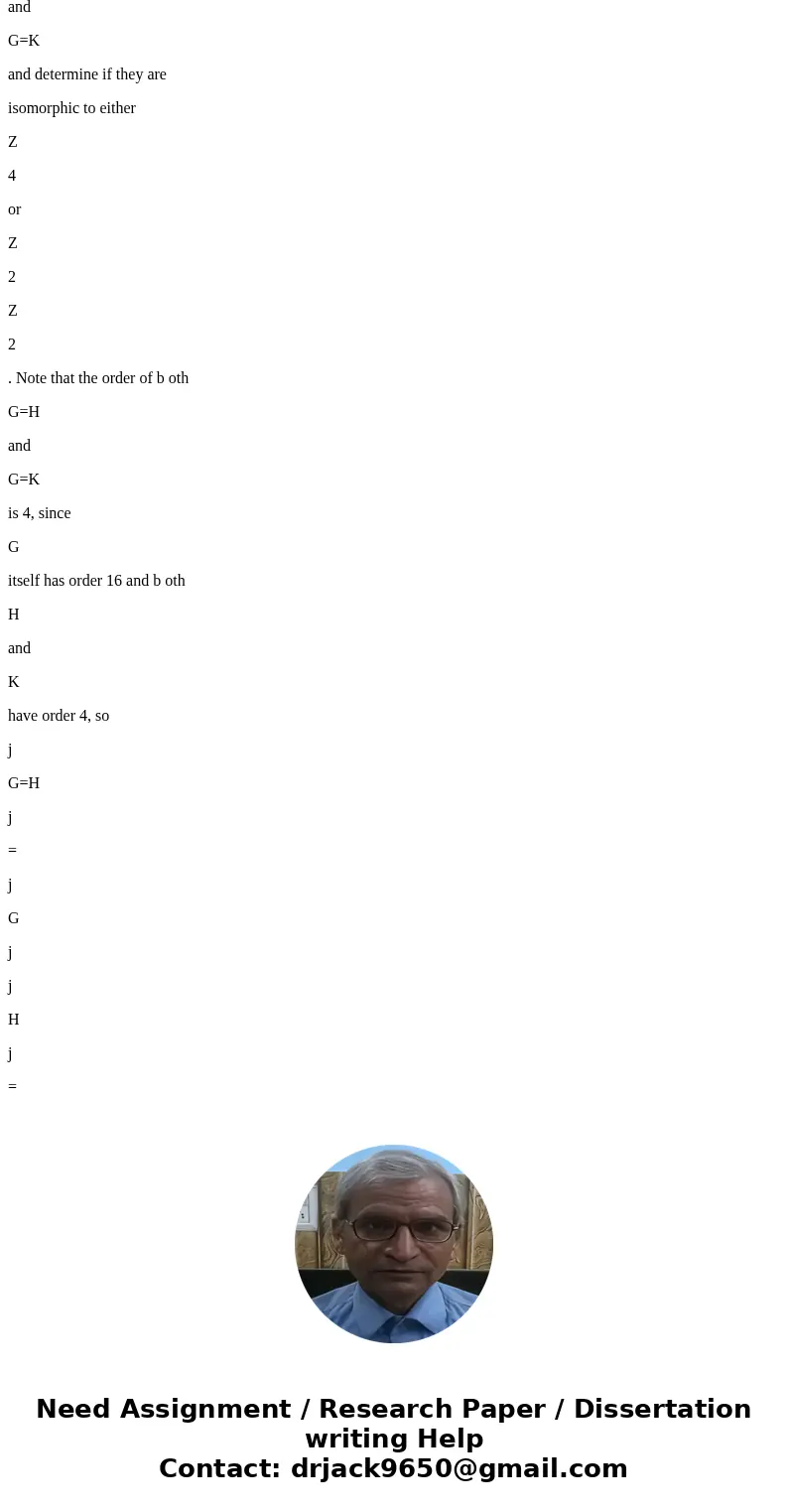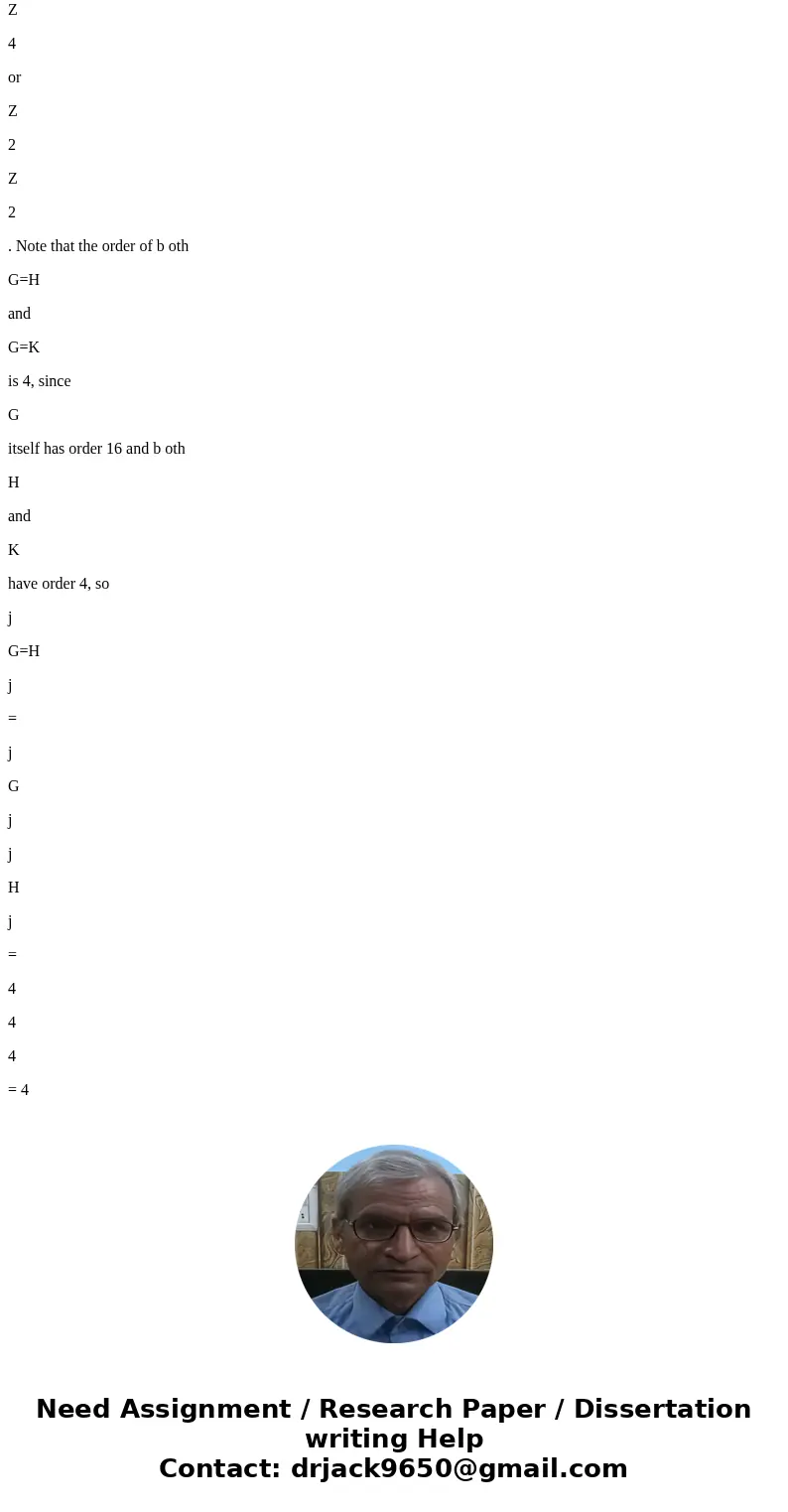Let K be the operator in Solve the following equations or e
Let K be the operator in (*). Solve the following equations, or explain why there is no solution. Ku - 2u = x(pi-x) \"Ku(x) = integral_0^pi k (x, y) u(y) dy where K (x, y) = y (pi - x) if x > y and K (x, y) = x (pi - y) if x 




Solution
Ans-
The main dierence b etween these two groups is that
Z
4
has elements of order
four, while
Z
2
Z
2
do es not. Thus, if we have a group
G
of order four, it is
isomorphic to either
Z
4
or
Z
2
Z
2
, and we can gure out which one by either:
1. Showing that the order of every element in
G
is less than or equal to two
(so
G
Z
2
Z
2
), or
2. Showing that at least one element of
G
has order four (so
G
Z
4
).
In this problem, we have an Ab elian group
G
=
Z
4
Z
4
and two (normal)
subgroups
H
=
f
(0
;
0)
;
(2
;
0)
;
(0
;
2)
;
(2
;
2)
g
and
K
=
h
(1
;
2)
i
=
f
(0
;
0)
;
(1
;
2)
;
(2
;
0)
;
(3
;
2)
g
:
We will lo ok at the factor groups
G=H
and
G=K
and determine if they are
isomorphic to either
Z
4
or
Z
2
Z
2
. Note that the order of b oth
G=H
and
G=K
is 4, since
G
itself has order 16 and b oth
H
and
K
have order 4, so
j
G=H
j
=
j
G
j
j
H
j
=
4
4
4
= 4





 Homework Sourse
Homework Sourse